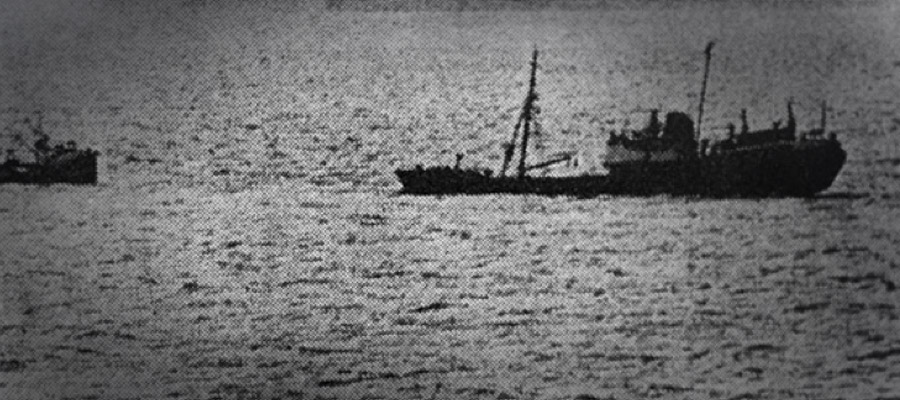James Barrie
Formerly known as Benella (Whittaker, 1998), the fishing vessel James Barrie ran aground at Lother Rock near the south-west end of South Ronaldsay on 27 March 1969. The ship's hull was pierced as it grounded, forcing the crew to abandon ship.
Two days later the vessel started to float off the rocks. It was unmanned at the time and drifted into the Pentland Firth. The lifeboat Grace Paterson Richie took the James Barrie in tow and headed for Scapa. However, the ship sank whilst under tow at the entrance to Widewall Bay.
Today, the James Barrie is almost intact, although the bronze propeller has been raised and unfortunately most of the other brass and collectors’ items have been salvaged from the wreck (Wrecksite.eu, 7/112/2011). Surviving features include the starboard anchor, masts, A-frame (aft), fishing blocks and winch. The top of the steam engine is also visible and the rudder lies across the seabed.
The ship now rests on its starboard side in about 43 metres of water. It is a popular dive amongst those who have visited Scapa Flow many times as it offers something different to the vast warships. It also makes for good training dives for those who are new to deep diving. The wreck rests in a similar depth to the deepest warships, but because it is a smaller wreck it can be viewed in one dive without the need for extended bottom times.
- Nationality: British
- Date built: 1949
- Type: Steam trawler
- Builder: Lewis John & Sons Ltd, Aberdeen
- Purpose: Fishing
- Weight: 666 Tons
- Length: 180.5ft (55m)
- Beam: 30.0ft (9.3m)
- Draught: 16ft (4.9m)
- Cause Lost: Ran aground and started leaking
- Date lost: 28/29 March 1969
- Engine: Triple-expansion engine, one boiler, single shaft
- Registration: Hull









